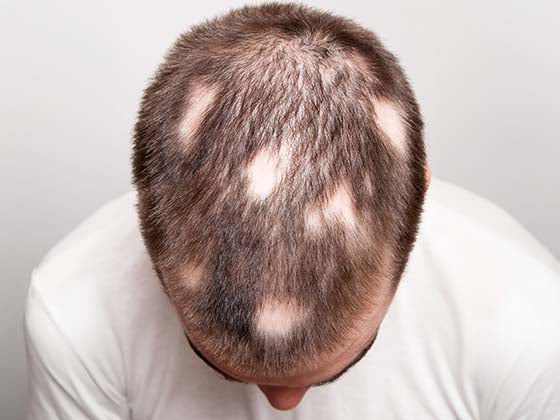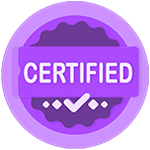Demodex folliculorum, or D. folliculorum, is another name for face mites, which are microscopic parasites that resemble ticks. There are no apparent demodex mites on the face. They feed on dead skin cells and oils and reside in the hair follicles in your skin, particularly around the eyelids and lashes. A second type, Demodex brevis (D. brevis), typically inhabits areas of thin, wrinkled skin. Studies indicate that as humans get older, nearly all of them have mites. Face mites are common, but when they proliferate excessively, a disorder called demodicosis results. This can aggravate or provoke skin problems like rosacea or eczema, as well as create symptoms like blisters and itching. Demodicosis needs medical attention. This blog examines face-mite overgrowth symptoms and problems, diagnosis and treatment options, and methods for managing these organisms.
Exploring the Causes and Symptoms of Face Mite Infestation

Demodicosis is the result of unchecked facial mite proliferation. Usually, this happens when your immune system isn't working properly.
-
Face mite infestation can be caused by a variety of factors, including natural skin presence, a weakened immune system, age and hormonal changes, skin conditions, poor hygiene, and environmental exposure.
-
Symptoms of a face mite infestation include skin irritation, acne-like breakouts, Rosacea-like symptoms, inflamed skin, eye problems, and thinning hair and eyelashes.
-
Topical treatments, oral medications, improved skincare routines, and lifestyle changes are all options for treating a face mite infestation.
-
Maintaining excellent hygiene, avoiding sharing personal belongings, managing underlying conditions, and controlling the environment can all help prevent facial mite infection.
Demystifying Demodex: Understanding the Biology of Face Mites

Demodex mites are minute organisms found on human skin, notably in the facial area. Although often overlooked, these small animals play an important part in our skin's ecosystem. Humans are predominantly inhabited by two species: Demodex folliculorum and Demodex brevis. This guide discusses their biology, behavior, and impact on human health.
-
Demodex folliculorum lives in hair follicles, especially those on the face, including the forehead, cheeks, and nose. Demodex brevis is located in sebaceous glands connected to hair follicles.
-
Adult mites are approximately 0.3 to 0.4 mm long, with elongated bodies and eight short, stubby legs near the head. The life cycle consists of egg, larva, protonymph, deutonymph, and adult stages, which last roughly 14-18 days. Mites reproduce in the follicle or gland, where females lay between 20 and 24 eggs. Demodex mites typically devour sebum, dead skin cells, and hormones, which aid in the natural exfoliation process.
-
Mites are often transmitted through intimate contact and begin colonization shortly after birth. Density varies; it is higher in places with more sebaceous activity and among older persons. While these mites are normally innocuous, they can benefit skin health by removing excess sebum and dead skin cells. In modest quantities, they are normally harmless and may even improve skin health. However, overpopulation can cause skin issues.
Signs and Symptoms: Recognizing the Presence of Face Mites on Your Skin

While Demodex mites are a normal part of the human skin ecosystem, an overpopulation can cause a variety of dermatological problems. Recognizing the signs and symptoms of an infestation of these mites is critical for effective treatment and management.
Common Signs and Symptoms of Demodex Infestation
-
Facial Redness and Inflammation: Persistent redness, particularly in areas with high sebaceous activity (nose, cheeks, forehead), can indicate an overpopulation of Demodex mites. This redness is frequently confused with other skin disorders, such as rosacea.
-
Itching and Irritation: An increase in mite density can cause severe itching and pain, especially near the brows, eyelashes, and nose.
-
Rough Skin Texture: The affected skin may feel rough or scaly as a result of increased mite activity and skin cell turnover. Small, rough lumps may form on the skin's surface.
-
Acne-like Breakouts: Pustules and papules resembling acne can appear, especially on the central face. These outbreaks frequently resist conventional acne treatments.
-
Skin Sensitivity: Skin may become more sensitive to skincare products and environmental conditions. A burning or stinging sensation may develop.
-
Thinning of Eyelashes: A Demodex infestation can cause thinning or loss of eyelashes. It may also result in recurrent eyelash discomfort and the sensation of something in the eye.
-
Blepharitis: Blepharitis, or eyelid inflammation, can be caused by Demodex mites that live in the eyelash follicles. Symptoms include swollen, red eyes, peeling at the base of the eyelashes, and crusty eyelashes upon awakening.
-
Dryness and Flakiness: The skin may show signs of severe dryness and flakiness, particularly in the affected areas. This can result in a chronic sensation of tight or dry skin.
Factors Contributing to Face Mite Infestation: What Puts You at Risk?

Understanding the elements that contribute to Demodex mite infestations can aid in controlling and preventing the resulting skin problems. While these mites are naturally present in the human skin microbiome, certain situations and behaviors might cause them to become overpopulated.
-
Age: As we get older, our bodies produce more sebum (the oily fluid that mites feed on), which provides more sustenance for Demodex mites. Consequently, older adults tend to have larger mite concentrations.
-
Skin Type: Individuals with oily skin create more sebum, which provides an ideal environment for mites to thrive. People with combination skin may experience increased mite activity in the oilier areas of their face, such as the T-zone (the forehead, nose, and chin).
-
Poor Hygiene: Failure to cleanse the face regularly can result in the accumulation of oils and dead skin cells, which serve as a rich food supply for mites. Failure to clean the eyelids can contribute to mite infestations around the eyelashes, resulting in illnesses such as blepharitis.
-
Immune System Health: People with weakened immune systems, whether as a result of medical disorders or immunosuppressive medications, are more vulnerable to Demodex infestation. Certain chronic conditions, such as diabetes or HIV, might impair immune function and increase susceptibility.
-
Hormonal Changes: Hormonal changes during puberty can increase sebum production, rendering teenagers more vulnerable to mite infestations. Hormonal variations during pregnancy and menopause can also have an impact on sebum production and skin health.
-
Skin Conditions: People with rosacea frequently have increased Demodex mite counts. The inflammation caused by rosacea can offer an ideal setting for mites. Demodex mites can exacerbate this skin ailment, which is characterized by red, flaky skin.
-
Environmental Factors: Higher humidity levels can enhance sebum production, making the atmosphere more conducive to mites. Environmental contaminants have the potential to block pores and provide new food sources for mites.
-
Genetic Predisposition: There may be a genetic tendency to have larger Demodex mite densities, however, this is an issue that deserves further investigation.
-
Use of Cosmetics and Skincare Products: Using heavy or oily cosmetics regularly might block pores and contribute to mite population growth. Products that leave extra oil on the skin can give more food to mites.
-
Lifestyle Factors: Chronic stress can impair the skin's barrier function and immunological response, potentially leading to increased mite populations. A diet rich in processed sweets and bad fats might aggravate skin problems that promote mite development.
Diagnosis and Treatment Options for Face Mite Infestation

To effectively diagnose and treat a Demodex mite infestation, you must first identify the symptoms, establish their presence, and then apply the appropriate medication. The following are the processes and solutions for dealing with Demodex infestations.
Diagnosis of Face Mite Infestation
-
Clinical Examination: A dermatologist will examine for redness, inflammation, rough skin texture, and acne-like outbreaks, especially in areas with high sebaceous activity (for example, the forehead, cheeks, and nose).
-
Microscopic Examination: A small sample of skin is scraped from the afflicted area and inspected under a microscope to determine the presence of mites. If you have symptoms like blepharitis (eyelid irritation), your eyelashes may be pulled and inspected for mites.
-
Biopsy: In some circumstances, a skin biopsy may be used to further explore and confirm the existence of mites and associated skin abnormalities.
Treatment Options for Face Mite Infestation
-
Topical Treatments: Metronidazole is widely applied as a topical gel or lotion to minimize mite populations and irritation. Ivermectin is an effective treatment for Demodex mites and is available as a topical cream (Soolantra) or an oral pill. A topical cream used to treat mite infestations, especially Demodex. Tea tree oil is useful due to its natural acaricidal characteristics; formulations containing at least 50% tea tree oil can be applied to the skin. Take care not to irritate the eyes.
-
Oral Medications: Oral Ivermectin is used in severe cases or when topical therapies are inadequate. It uses a systematic approach to eliminate mite populations. Secondary bacterial infections caused by Demodex infestations, such as those that aggravate rosacea, are occasionally given.
-
Skin Care and Hygiene: Use light cleansers to remove excess oil and dead skin cells, which will reduce the mites' feeding supplies. Blepharitis can be managed by regularly cleaning the eyelid margins with diluted baby shampoo or specialized eyelid cleansers.
-
Lifestyle and Preventive Measures: To avoid clogged pores, use noncomedogenic skincare and cosmetic products. Stress reduction and a nutritious diet can boost skin health and resiliency. Maintaining a clean atmosphere and preventing humid circumstances, encourage mite proliferation.
-
Adjunctive Therapies: In some cases, laser therapy can be utilized to alleviate the redness and inflammation associated with rosacea that is aggravated by Demodex mites. Certain types of light therapy can indirectly regulate inflammation and lower mite populations by improving skin health.
Diagnostic Methods: How Doctors Identify Face Mites in Your Skin

Dermatologists employ visual inspection, symptom inquiry, and microscopic techniques to effectively diagnose Demodex mite infestations. Skin scraping, standardized skin surface biopsy, adhesive tape sample, and eyelash examination all give conclusive proof of mite infestation. In some circumstances, a skin biopsy or dermoscopy may be used to obtain more information. Accurate diagnosis is essential for the successful treatment and management of related skin disorders.
Medical Treatments: Prescription Options for Eliminating Face Mites

Demodex mite infestations can be extremely uncomfortable and exacerbate a variety of skin disorders. Prescription drugs are frequently required for effective mite treatment and symptom relief. The following are the basic prescription treatments for removing facial mites:
- Topical Medications
-
Metronidazole is available in three forms: gel, cream, and lotion. Antiparasitic and anti-inflammatory qualities aid in reducing mite populations and inflammation. Typically applied once or twice a day to the afflicted regions.
-
Ivermectin comes in the form of a topical lotion. It kills mites by destroying their neural systems. Applied once a day to the entire face.
-
Permethrin is available in the form of topical cream. The neurotoxin paralyzes and kills mites. Applied to the affected areas, usually once a week.
-
Sulfur-Based Products, It takes the shape of creams, lotions, or soaps. Antimicrobial and keratolytic qualities help to reduce mite populations and enhance skin quality. Applied to the affected areas; frequency varies based on the product formulation.
-
Benzoyl Peroxide comes in the form of gel, cream, or wash. Antibacterial and keratolytic properties help reduce skin oiliness and mite habitat. Applied once or twice a day, depending on skin tolerance.
-
Clindamycin is available in the form of gel, lotion, and solution. Antibiotics can help decrease secondary bacterial infections caused by mite infestations. Applied once or twice per day.
- Oral Medications
-
Oral Ivermectin is a systemic antiparasitic that kills mites by affecting their neural systems. Typically, a single dose is administered, with the possibility of a second treatment one week later. It is used in severe or refractory instances where topical therapies have proven ineffectual.
-
Oral Metronidazole is a systemic antibiotic having antiparasitic effects. It is normally recommended for a seven to ten-day period. It helps to minimize mite populations and accompanying irritation.
-
Common oral antibiotics include doxycycline, tetracycline, and minocycline. It reduces subsequent bacterial infections and inflammation. Varies depending on the antibiotic and the severity of the disease. Frequently used in conjunction with topical therapies for rosacea and other inflammatory diseases caused by Demodex.
- Adjunctive Treatments
-
Keratolytic agents help to exfoliate the skin, removing the mites' habitat (dead skin cells and excess sebum). Common choices include salicylic acid and alpha-hydroxy acids (AHAs). Applied as instructed, frequently in conjunction with other therapies.
-
Antihistamines reduce the itching and allergic reactions caused by mite infestations. Loratadine and cetirizine are popular choices. Taken orally as needed.
Natural Remedies: Home Treatments to Combat Face Mite Infestation

While pharmaceutical drugs are frequently required for severe Demodex mite infestations, natural solutions can be beneficial in minor cases or as adjunctive treatments. Here are some home remedies that can help combat facial mite infestations:
-
Tea Tree Oil: Tea tree oil has potent antimicrobial and anti-inflammatory properties. Pure tea tree oil can be irritating, so it should be diluted with carrier oil (e.g., coconut oil or olive oil) in a ratio of about 5-10 drops of tea tree oil per tablespoon of carrier oil. Apply the diluted oil to the affected areas with a cotton swab or pad twice daily. Use a tea tree oil eyelid cleanser or dilute tea tree oil with baby shampoo for cleaning eyelids to reduce mites around the eyes.
-
Aloe Vera: Aloe vera contains calming, anti-inflammatory, and antibacterial properties. Apply pure aloe vera gel to the afflicted skin regions. After 30 minutes, rinse with lukewarm water. This can be done twice a day.
-
Apple Cider Vinegar: Apple cider vinegar (ACV) contains antibacterial and astringent effects. Combine equal parts ACV and water. Apply the solution to the face using a cotton ball or pad. Allow it to rest for approximately 15 minutes before washing it with water. This can be done once or twice a day.
-
Coconut Oil: Coconut oil contains antibacterial and moisturizing characteristics that can help reduce mites and soothe the skin. Apply a small application of virgin coconut oil to the affected areas before going to bed. Leave it on overnight, then rinse off in the morning.
-
Neem Oil: Neem oil contains natural antibacterial, antifungal, and anti-inflammatory effects. Mix neem oil with a carrier oil (such as coconut oil) at a 1:10 ratio. Apply diluted neem oil to the afflicted areas with a cotton swab or pad once a day.
-
Witch Hazel: Witch hazel is a natural astringent with anti-inflammatory effects. Apply witch hazel extract to the face with a cotton ball, paying special attention to any affected areas. This can be done twice a day.
-
Diet and Lifestyle Changes: Eat a diet high in anti-inflammatory foods such as fruits, vegetables, whole grains, lean meats, and healthy fats. Avoid sugary, processed, and oily foods, as these can aggravate skin issues. Drink enough water to keep your skin hydrated and healthy. To help manage stress, try yoga, meditation, or deep-breathing exercises.
-
Regular Skin Care Routine: Wash your face twice each day with a moderate, non-comedogenic cleanser. This helps to eliminate excess oil and dead skin cells, which mites feed on. Gently exfoliate your skin 1-2 times a week to remove dead skin cells and prevent clogged pores. Use a gentle exfoliation to avoid skin irritation. Use a non-comedogenic moisturizer to keep your skin nourished without adding too much oil.
Preventing Face Mite Infestation: Tips for Protecting Your Skin

Face mite infestations can be avoided by exercising good hygiene, following regular skincare procedures, and adopting healthy living habits. Here are some measures to help protect your skin from Demodex mites:
- Maintain Good Facial Hygiene:
-
Wash your face twice a day with a gentle, non-comedogenic cleanser to remove excess oil, debris, and dead skin cells, which can harbor mites.
-
To avoid irritating your skin, use lukewarm water instead. To eliminate dirt and minimize mite populations around your eyes, clean them once a day with a light eyelid cleaner or diluted baby shampoo.
-
Consider using tea tree oil-infused eyelid wipes because they have antibacterial characteristics. Removal Always remove your makeup before going to bed to avoid clogged pores and make your skin less inviting to mites. Use a gentle makeup remover that is suitable for your skin type.
2. Choose the Right Skincare Products:
-
To decrease oil and debris buildup, choose non-comedogenic skincare and cosmetic products that will not clog pores. Avoid using heavy, oily, or greasy products, since these might increase mite infestations.
-
Exfoliate your skin 1-2 times a week using a gentle exfoliant to remove dead skin cells and prevent clogged pores. Be cautious to prevent skin irritation, which can exacerbate mite infestations.
-
Use a non-comedogenic moisturizer to keep your skin nourished without adding too much oil. Consider moisturizers that have anti-inflammatory or antibacterial components, such as aloe vera or tea tree oil.
3. Healthy Lifestyle Habits:
-
Consume a diet high in fruits, vegetables, whole grains, lean proteins, and healthy fats to promote general skin health. Reduce your intake of sugary, processed, and fatty foods, which can cause skin problems.
-
Drink plenty of water throughout the day to keep your skin hydrated and healthy.
-
Exercise, yoga, meditation, or hobbies can all help you manage stress, which can have an impact on the health and resilience of your skin.
4. Regular Cleaning of Personal Items:
-
To eliminate mites and remove accumulated oils and skin cells, wash bedding, pillows, and towels in hot water on a regular (at least weekly) basis. Consider using pillowcases made from natural, breathable fibres such as cotton.
-
Makeup brushes, sponges, and applicators should be cleaned regularly to avoid the accumulation of oil, dirt, and mites. Before using tools, clean them with a moderate brush cleanser or mild soap and allow them to thoroughly dry.
5. Avoiding Overuse of Skincare Products:
-
Avoid using too many skincare products, which might irritate your skin and aggravate mite infestations. Stick to a straightforward, consistent skincare program based on your skin type.
6. Environmental Control:
- Keep indoor humidity at a suitable level, as high humidity can promote sebum production and create an ideal setting for mites. To maintain ideal humidity levels, use a dehumidifier as needed.
Hygienic Practices: Strategies to Minimize the Risk of Face Mites

Following these hygiene procedures can dramatically reduce the incidence of facial mite infestations. Regular facial cleansing, correct eyelid hygiene, cautious skincare product selection, regular exfoliation, and living in a clean environment are all important techniques. Complement them with a nutritious diet, enough hydration, and stress management to preserve overall skin health and resilience against mite infestations.
Product Selection: Choosing Face-Friendly Skincare Products

Face-friendly skincare products are non-comedogenic, mild, oil-free, hypoallergenic, and fragrance-free. To maintain a healthy skin barrier, utilize products with antimicrobial components such as tea tree oil and benzoyl peroxide, as well as light exfoliators. Always read labels and choose products developed for sensitive skin to reduce irritation and boost general skin health, lowering the likelihood of Demodex mite infection.
Lifestyle Adjustments: Changes to Prevent Face Mite Recurrence

Preventing the recurrence of face mite infestations requires making lifestyle changes to maintain skin health and reduce conditions permissive to mite growth. Some advice for preventing face mite recurrence includes a consistent skincare routine, a good diet and hydration, stress management, environmental control, personal hygiene habits, avoiding potential triggers, and regular check-ups. By implementing these lifestyle changes into your daily routine, you can help avoid future face mite infestations and improve overall skin health. Consistent skin care routines, a balanced diet, stress management, environmental control, personal hygiene, and avoiding potential triggers are critical for reducing the conditions that promote mite development. Regular monitoring and follow-up with a dermatologist can help to ensure that any skin abnormalities are treated and managed properly.
Taking Control of Your Skin Health: Empowering Your Journey Against Face Mite Infestation

Taking charge of your skin's health in the face of a mite infestation entails education, creating a personalized skincare routine, adopting healthy lifestyle habits, environmental control, self-care practices, regular monitoring, and getting help when necessary. You can effectively treat face mite infestation and preserve optimal skin health and well-being by arming yourself with knowledge and taking proactive steps to care for your skin. Remember that you are not alone on your journey, and professional help and community connections can provide vital tools and encouragement along the way.

















1 comment
Janet Amerine
Is the goal to remove all skin mites? Is that even possible?
Is the goal to remove all skin mites? Is that even possible?